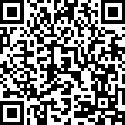Our Editorial Team

Christopher Roberts
Christopher is passionate about artificial intelligence (AI), technology, science, inclusion and diversity, and looking after our world.
He is a change leader with the goal of improving people’s lives through projects and transformation.
Christopher advocates for responsible innovation, he wants to popularise critical thinking, and excite you about the world around us and what the future holds.
Christopher has published over 250 articles on Technology Bloggers.

Dr Jonny Hankins
Jonny is Foreign Correspondent for the Bassetti Foundation, and editorial board member for the Journal of Responsible Innovation. He has published several books and academic articles, with the focus of his writings on the ethics of innovating responsibly.
Previously Jonny worked as a translator and a school teacher in Italy and an upholsterer in the UK. He is a keen musician and actor who has performed in various productions across the globe.
Jonny joined Technology Bloggers in July 2011, gaining editor status in September 2013. He has written over 200 articles on Technology Bloggers.

Farzana Chowdhury
Farzana’s bio is coming soon…
Bassetti Foundation
The Bassetti Foundation is an organisation founded to champion and promote responsible innovation. Jonny Hankins works for the foundation and uses Technology Bloggers as a platform to share ideas on how to be more ethically minded in our pursuit of improvement.
For example have you considered the environmental impacts of 3D Printing particulates, or that your brain needs to be stretched to avoid digital amnesia?
In return for this platform, the foundation covers the hosting and domain fees for Technology Bloggers. This ensures we can continue to operate ad free, without impacting our impartiality. See our joint statement for more.
Guest Authors
Technology Bloggers has seen fantastic contributions from guest authors over the years too.
Are you interested in being part of our journey?
Send us a (short) email to writers (at) technologybloggers.org and we can chat 🙂
What We Write About
Technology is our core area of writing, however we also post about the environment, computers, the Internet, science, blogging, social media, gadgets and more. A full list of the topics we cover can be found in the footer.
Any Questions?
Got a question? Contact us.

